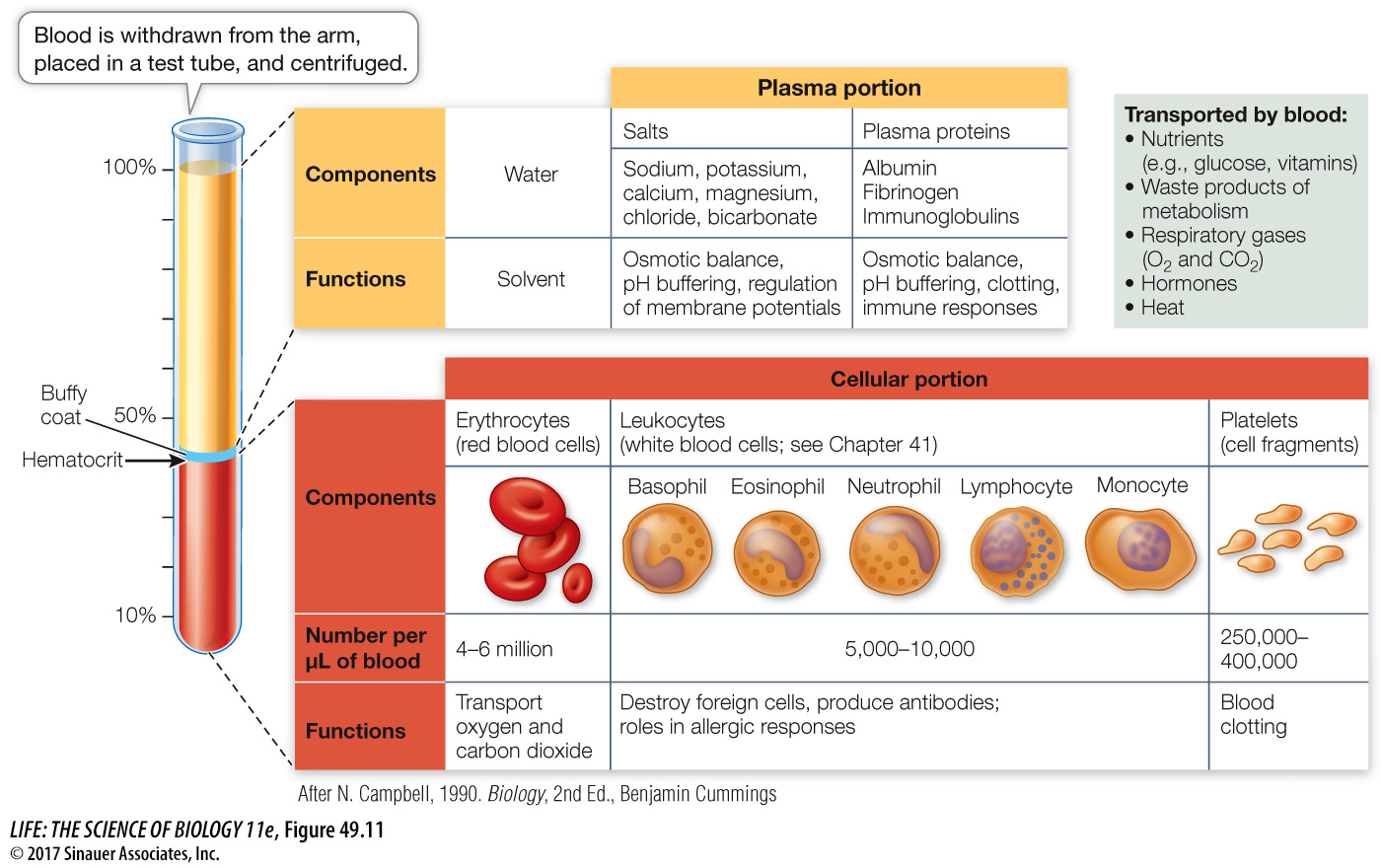key concept
49.4
Circulatory System Functions Depend on Blood and Blood Vessels
key concept
49.4
Circulatory System Functions Depend on Blood and Blood Vessels
Blood is a connective tissue, and like all connective tissues, it consists of cells suspended in an extracellular matrix. There are a variety of blood cell types with different functions, and the extracellular matrix has a complex composition that is highly regulated. The unusual feature of blood is that the extracellular matrix is a liquid, so blood is a fluid tissue that circulates in a system of closed vessels through the bodies of vertebrates and invertebrates that have closed circulatory systems. The properties of the different classes of vessels reflect their functions.
focus your learning
Red blood cells are generated in bone marrow and, until they are destroyed in the spleen, they transport respiratory gases.
Platelets and blood proteins are responsible for blood clotting.
Smooth muscle cells in arteries and arterioles control blood flow to specific tissues and also control blood pressure.
Extracellular fluid exchange between the blood and the interstitial space occurs in capillary beds and depends on hydrostatic pressure pushing water out of the capillaries and osmotic pressure pulling water back into the capillaries.
One-
way valves and muscle contraction help return venous blood to the heart.
The cells of the blood can be separated from the fluid matrix, called blood plasma, by centrifugation (Figure 49.11). If a sample of blood is spun in a centrifuge, all the cells move to the bottom of the tube, leaving the clear, straw-
